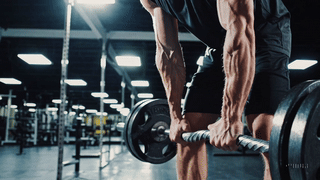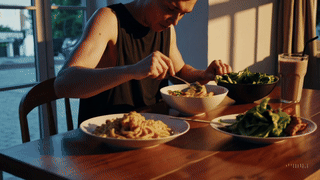Boost Your Muscle Mass by 2.7% in 4 Weeks: The Ultimate Science-Backed Blueprint
Progressive overload, optimized calorie intake, and recovery techniques to boost muscle mass and cut soreness in just 4–6 weeks.

In this issue
- Debunking Muscle Confusion: Data Shows Routine Changes Every 4–6 Weeks
- Don't Boost GainsHigh-Calorie Intake Boosts Muscle Mass by 2.7% in Just 4 Weeks
- Cutting Delayed OnsetMuscle Soreness by 40%
This week I started a new strength training program, new to me, but not new in theory. I’ll touch on that in a moment.
I’ve also made my way from the dieting phase, to maintenance and now weight gain phase. It’s interesting how much better you feel when your eating enough food.
Lastly, since the introduction into the new routine, walking a least 10k steps, and BJJ training sessions, I’m definitely sore, but I love the feeling… Not weird I promise.
Okay, enough about me, let’s get into today’s issue.
Debunking Muscle Confusion: Data Shows Routine Changes Every 4–6 Weeks Don't Boost Gains

The principle of progressive overload suggests that sticking with one program long enough (typically 4–6 weeks) allows your nervous system and muscles to adapt properly.
Frequent changes (often referred to as "muscle confusion") might actually hinder progress because your body never gets a chance to fully adapt to a consistent stimulus.
From personal experience, changing routines led me to dropping the weight to cater to the next routine. For example, if I did deadlift and hit 315lbs for 5 reps, the next program might not have deadlifts incorporated at all.
High-Calorie Intake (67.5 kcal/kg/day) Boosts Muscle Mass by 2.7% in Just 4 Weeks of Resistance Training

This pilot study examined how varying levels of dietary energy intake following resistance training affected muscle mass and body fat in bodybuilders.
The findings suggested that a higher energy intake was associated with greater muscle mass gains and improved body composition, underscoring the importance of achieving an optimal energy balance during resistance training.
One thing to note, as we increase caloric intake, which induces muscle growth, it also supports increase in bodyfat. I prefer to take the slow increase of calories to control the rate of bodyfat increase.
Cutting Delayed OnsetMuscle Soreness by 40%

Several things that may help mitigate DOMS by targeting the inflammatory and microtraumatic responses in muscle tissue such as:
- Cryotherapy: commonly delivered as ice baths or localized ice application, can reduce blood flow and metabolic activity in the muscles, thereby limiting the inflammatory process and reducing the sensation of soreness.
- Compression garments: they work by stabilizing muscle tissue, reducing excessive muscle oscillation, and enhancing venous return, which may help to minimize swelling and expedite the removal of metabolic by-products that contribute to soreness.
- Non-steroidal anti-inflammatory drugs (NSAIDs): which can blunt the inflammatory response by inhibiting enzymes producing inflammatory signals, although their prolonged use might interfere with muscle protein synthesis and long-term recovery.
References
- https://journals.plos.org/plosone/article?id=10.1371/journal.pone.0226989
- Effects of Different Dietary Energy Intake Following Resistance Training on Muscle Mass and Body Fat in Bodybuilders: A Pilot Study
- Gu J, Lin X. [Clinical analysis of 184 eyes with perforating injury]. Yan Ke Xue Bao. 2001 Dec;17(4):252-4. Chinese. PMID: 12567517.